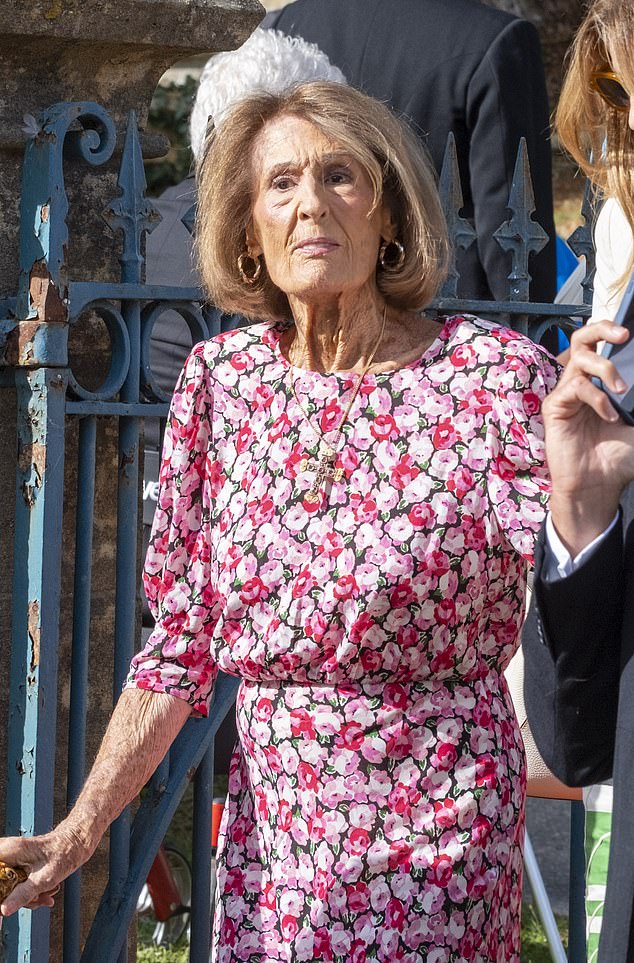The world of British high society is mourning the passing of Lady Annabel Goldsmith — the woman whose name became synonymous with elegance, glamour, and London nightlife.
The inspiration behind one of Mayfair’s most iconic nightclubs, Lady Annabel passed away at the age of 91, leaving behind a legacy that spanned generations of the country’s elite.
A Life That Defined London’s Swinging Sixties
To many, Lady Annabel was more than a socialite — she was a symbol of a dazzling era.
Her first husband, Mark Birley, founded the famous members-only nightclub Annabel’s in 1963, naming it after her.
The venue quickly became the place to be seen in London during the Swinging Sixties, attracting everyone from the Kennedys and the Royal Family to Hollywood stars like Frank Sinatra.
Reflecting on that period, Lady Annabel once joked, “The dance floor was one of the hottest six-foot-square pieces of ground in London — I don’t remember ever seeing it empty.”
From Aristocratic Roots to Society Royalty
Born Annabel Vane-Tempest-Stewart in 1934, she came from Anglo-Irish aristocracy, the daughter of Robin Vane-Tempest-Stewart, Viscount Castlereagh, who later became the 8th Marquess of Londonderry, and Romaine Combe of Surrey.
She inherited her title, Lady Annabel, at just 15 when her father succeeded to the marquessate.
Tragedy came early — her mother passed away from cancer when she was only 17, and her father followed a few years later in 1955.
Yet her social standing remained undeniable; even Queen Elizabeth II attended her coming-out ball in 1952, marking her formal debut into society.
Love, Scandal, and a Life in the Spotlight
In 1954, Lady Annabel married Mark Birley, with whom she had three children — Rupert, Robin, and India Jane.
Their marriage lasted over two decades but became the subject of newspaper whispers after her affair with charismatic businessman Sir James Goldsmith came to light.
After divorcing Birley, she went on to marry Goldsmith in 1978. Together, they had three more children — Jemima, Zac, and Ben.
Her marriage to Goldsmith remained one of the most talked-about unions in British society.
Ever witty, she once quipped, “I was an incredible mother, rather a good mistress, but not a very good wife.”
Joy and Tragedy in Equal Measure
Though her life seemed gilded, it wasn’t without heartbreak.
Her eldest son, Rupert, tragically died in West Africa, and her second son, Robin, was mauled by a tiger.
Yet Lady Annabel remained composed and resilient, a figure of quiet strength beneath the polished surface of high society.
The Enduring Spirit of Annabel’s Nightclub
Even as decades passed, Lady Annabel’s influence never faded.
Her namesake nightclub remained a cornerstone of London’s exclusive scene, attracting royals, politicians, and A-list celebrities.
In fact, even Queen Elizabeth II paid a visit to Annabel’s in 2003 — a rare royal appearance at such a venue.
A Family of Prominence and Public Service
Her children carried on her legacy of prominence and purpose. Jemima Goldsmith became a respected journalist and film producer, while Zac Goldsmith entered politics, serving as an MP for Richmond Park and later as a member of the House of Lords.
Zac even ran for London Mayor in 2016, continuing the family’s close ties with public life.
A Lasting Presence in British High Society
Remarkably, Lady Annabel was still attending high-profile events just weeks before her passing.
Only last month, she was seen celebrating her son Zac’s wedding to Hum Fleming in the Cotswolds — a gathering that reunited many of Britain’s most notable families.
Even in her nineties, she remained a quiet yet luminous presence — a woman who witnessed the changing tides of Britain’s social scene while never losing her charm, grace, or wit.
Remembering a True Icon of Elegance
Lady Annabel Goldsmith’s passing marks the end of an era — one defined by beauty, privilege, and undeniable charisma.
She was a bridge between the grandeur of post-war aristocracy and the glamour of modern celebrity culture.
As tributes pour in from across London and beyond, her legacy endures not just in her famous children or the Mayfair club that bears her name, but in the indelible mark she left on British society itself.
Share on Facebook «||» Share on Twitter «||» Share on Reddit «||» Share on LinkedIn